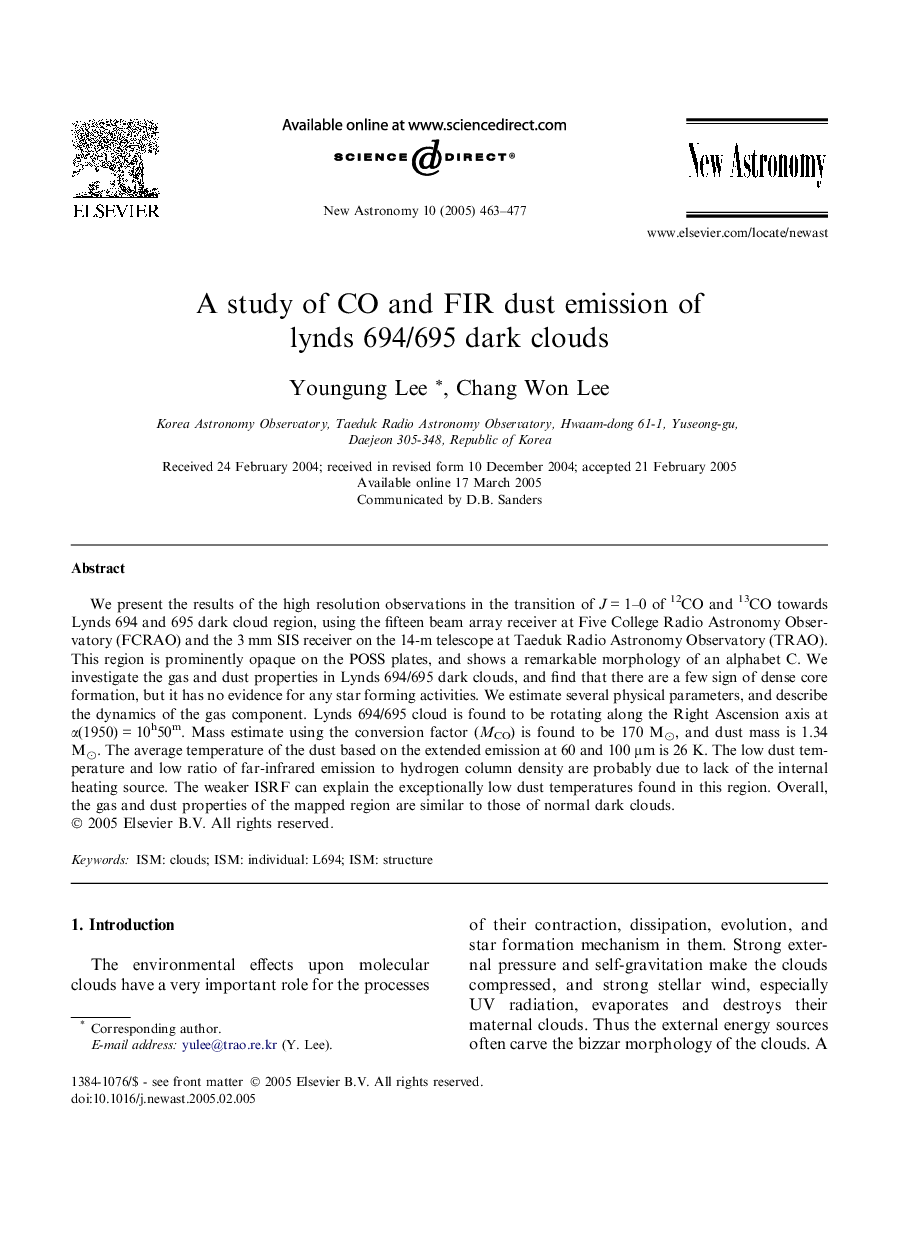| Article ID | Journal | Published Year | Pages | File Type |
|---|---|---|---|---|
| 10704722 | New Astronomy | 2005 | 15 Pages |
Abstract
We present the results of the high resolution observations in the transition of J = 1-0 of 12CO and 13CO towards Lynds 694 and 695 dark cloud region, using the fifteen beam array receiver at Five College Radio Astronomy Observatory (FCRAO) and the 3 mm SIS receiver on the 14-m telescope at Taeduk Radio Astronomy Observatory (TRAO). This region is prominently opaque on the POSS plates, and shows a remarkable morphology of an alphabet C. We investigate the gas and dust properties in Lynds 694/695 dark clouds, and find that there are a few sign of dense core formation, but it has no evidence for any star forming activities. We estimate several physical parameters, and describe the dynamics of the gas component. Lynds 694/695 cloud is found to be rotating along the Right Ascension axis at α(1950) = 10h50m. Mass estimate using the conversion factor (MCO) is found to be 170 Mâ, and dust mass is 1.34 Mâ. The average temperature of the dust based on the extended emission at 60 and 100 μm is 26 K. The low dust temperature and low ratio of far-infrared emission to hydrogen column density are probably due to lack of the internal heating source. The weaker ISRF can explain the exceptionally low dust temperatures found in this region. Overall, the gas and dust properties of the mapped region are similar to those of normal dark clouds.
Keywords
Related Topics
Physical Sciences and Engineering
Physics and Astronomy
Astronomy and Astrophysics
Authors
Youngung Lee, Chang Won Lee,
